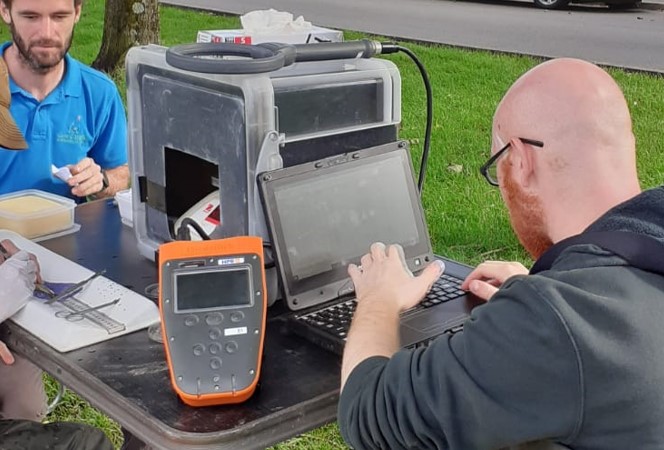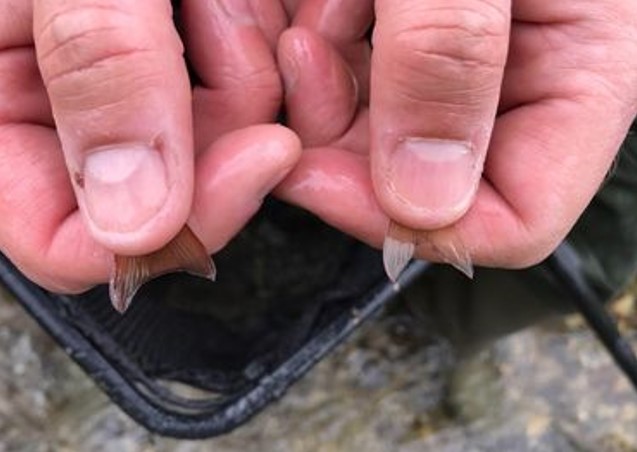By Lewis Webster, Bournemouth University
During this placement, I felt I developed many new skills both from a technical and a professional standpoint. I did not have much prior knowledge of the Salmonidae nor of electrofishing techniques, but due to the many hours spent on this placement, I felt confident and competent with the physical side of this fieldwork (i.e., in situ taxonomy and netting the fish). I also developed my data entry skills via the tablework side of the placement. Overall, this was hard work with long days, but I thoroughly enjoyed it and found it extremely rewarding.

Data entry (recording length, weight, unique scale ID, etc) at Dorchester Mill Stream.

The key distinguishing feature used for identifying the fish – the left is a trout, with its more rounded tail, the right is a salmon, with its more deeply forked tail.

0 Comments